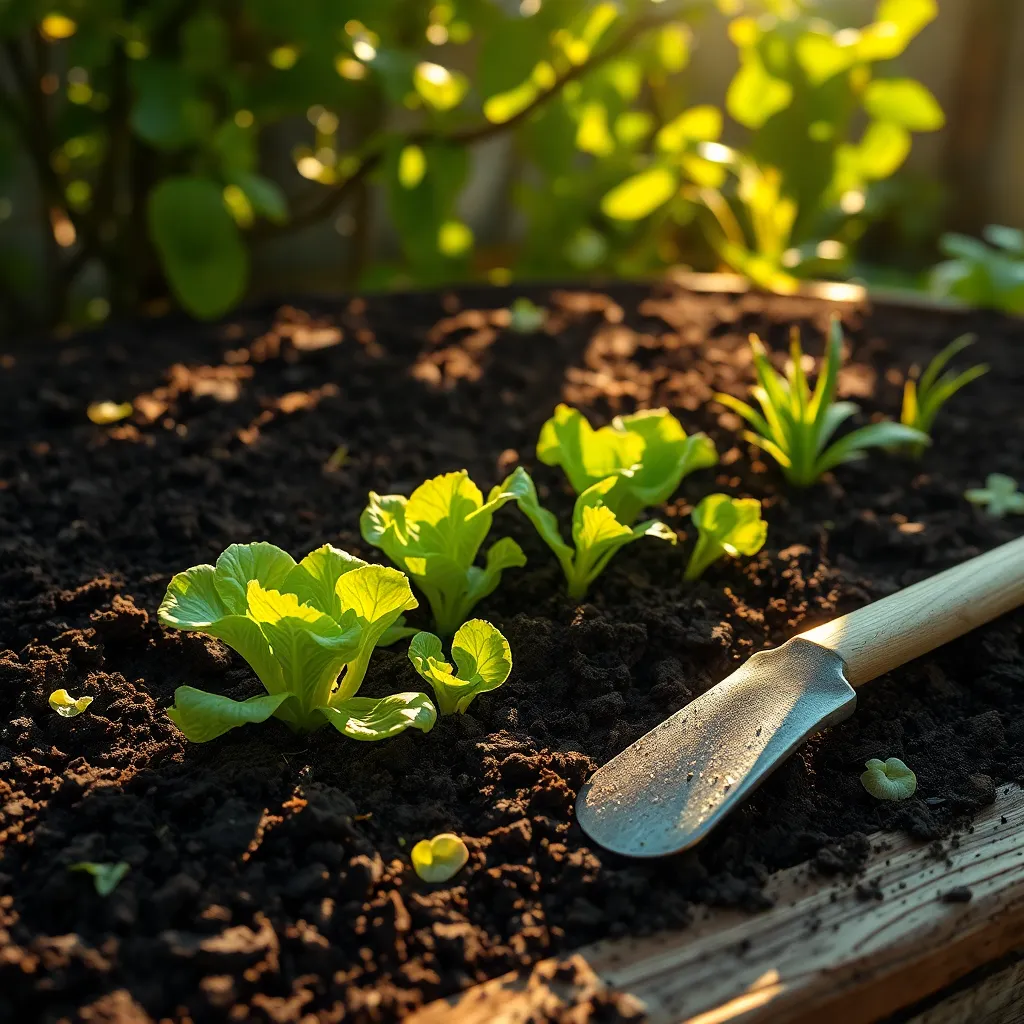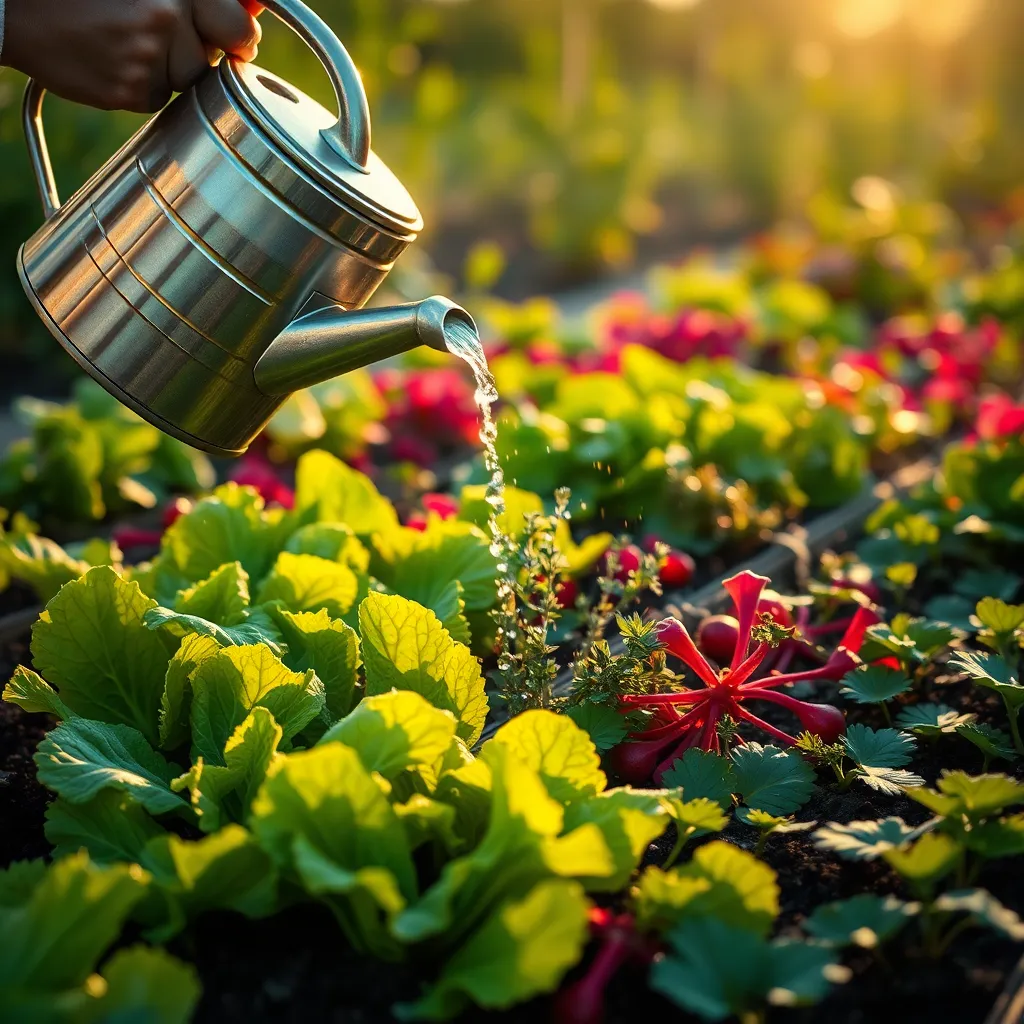Imagine stepping into your backyard and picking fresh, vibrant greens for your next meal—there’s something truly rewarding about growing your very own salad garden. Whether you’re just beginning your gardening journey or you’re a seasoned horticulturist, cultivating a salad garden offers a delightful mix of challenges and rewards, all while ensuring you have the crispest, most flavorful salads on your plate.
The beauty of a salad garden lies in its versatility and simplicity, making it a perfect project for both small spaces and expansive plots. This article will guide you through selecting the right seeds, preparing your soil, and understanding the care each plant needs—ultimately transforming your garden into a salad lover’s paradise.
For beginners, this journey offers a chance to learn and connect with nature at its most delicious. Meanwhile, experienced gardeners will find joy in experimenting with different varieties and optimizing their growing conditions. Everyone will leave with a deeper appreciation for the humble salad, armed with practical tips and insights to sow, nurture, and harvest with confidence.
Select Ideal Salad Varieties

Choosing the right salad varieties is the first step towards a successful salad garden. Opt for fast-growing, resilient types like leaf lettuce, arugula, and spinach, which provide quick harvests and minimal maintenance.
For beginners, leaf lettuce is an excellent choice due to its forgiving nature and rapid growth. Ensure it receives ample sunlight and keep the soil consistently moist but not waterlogged for best results.
Arugula, known for its peppery flavor, thrives in cooler temperatures, making it perfect for spring and fall gardens. Plant arugula in well-drained soil and water it lightly every few days to keep it tender and flavorful.
Spinach can be a little more demanding, needing rich, well-drained soil and regular watering to prevent bolting. Advanced gardeners might try successive sowing every two weeks to enjoy a continuous harvest throughout the growing season.
- Use a soil mix rich in organic matter to improve moisture retention and nutrient availability.
- Mulching around plants can help maintain soil moisture and reduce weeds.
- Consider companion planting with radishes or carrots to maximize space and deter pests.
Prepare Soil with Compost

To prepare your soil with compost, start by selecting a high-quality, well-decomposed compost. This will provide essential nutrients and help improve soil structure, making it ideal for growing delicious salad greens.
First, clear your garden bed of any debris, rocks, or weeds to create a clean slate. Then, spread a layer of compost about two to three inches thick over the top of your soil.
Using a garden fork or spade, gently mix the compost into the top six to eight inches of soil. This incorporation ensures that the nutrients are evenly distributed and accessible to your plants’ roots.
For a more advanced technique, consider conducting a soil test to determine the specific nutrient needs of your garden. This can guide you in choosing the right type of compost or amendments to further enhance soil fertility.
Sow Seeds at Correct Depth

When sowing seeds for your salad garden, depth is crucial for successful germination. As a general rule of thumb, seeds should be planted at a depth of about twice their diameter. This means larger seeds, like those of peas, should be planted deeper than smaller seeds, like lettuce.
To determine the correct planting depth, refer to the seed packet, which often provides specific instructions. Following these guidelines can significantly improve germination rates, ensuring a more productive garden. It’s also helpful to gently firm the soil over the seeds to eliminate air pockets, which can dry out the seeds.
Soil consistency can impact planting depth, so choose a well-draining medium. Loamy soil is ideal as it holds moisture without becoming waterlogged, providing seeds with the right conditions to sprout. For gardeners using raised beds or containers, ensure your mix is light and airy to facilitate easy root penetration.
Watering is another factor that affects seed depth success. Seeds need consistent moisture to germinate, so water gently to avoid washing them away or burying them too deep. Consider using a fine spray attachment on your hose or a watering can with a rose head to distribute water evenly.
Water Consistently and Evenly

Ensuring your salad garden receives consistent and even watering is crucial for healthy plant growth. Inconsistent watering can lead to bolting or poor flavor development, particularly with leafy greens like lettuce and spinach.
Water your salad garden early in the morning to minimize evaporation and ensure that plants have access to moisture throughout the day. Aim for about 1 to 1.5 inches of water per week, either from rainfall or supplemental watering.
For those using containers, remember that soil tends to dry out faster than in-ground beds, so check moisture levels daily. Insert your finger about an inch into the soil; if it feels dry, it’s time to water.
Consider installing a drip irrigation system for more advanced gardeners, which delivers water directly to the base of the plants. This method reduces water waste and prevents wet foliage, which can lead to disease.
Harvest Leaves Regularly

Regularly harvesting leaves from your salad garden not only provides you with fresh greens but also encourages the plants to produce more. When you take the time to snip away outer leaves, the plant focuses its energy on new growth, leading to a continual harvest.
Start by picking leaves when they are young and tender, as these offer the best flavor and texture. It’s best to harvest in the morning when the leaves are crisp and full of moisture, ensuring they stay fresh longer after picking.
To avoid damaging the plant, use clean, sharp scissors or shears and cut the leaves at the base. Leave at least a third of the plant intact to maintain its health and vigor, ensuring it continues to grow robustly.
For those growing multiple types of greens, such as lettuce, spinach, or arugula, consider a staggered planting schedule. This approach allows for a continuous harvest by ensuring that not all plants mature at the same time, providing a steady supply of fresh leaves.
Advanced gardeners might explore succession planting, which involves sowing new seeds every few weeks. This technique not only maximizes yield but also extends the harvest season, making your salad garden a year-round source of fresh greens.
Conclusion: Growing Success with These Plants
As we’ve explored in “How to Grow Your Own Salad Garden,” nurturing a garden shares remarkable parallels with cultivating thriving relationships. First, we learned about the importance of consistent care—just as daily attention helps plants flourish, regular, meaningful interactions strengthen bonds. Second, the necessity of patience reminds us that both gardens and relationships require time and understanding to grow. Third, diversity enriches; a variety of plants, like diverse perspectives, can bring vibrancy and resilience. Fourth, we discussed how dealing with weeds translates to addressing issues before they overtake the beauty of the connection. Lastly, harvesting the fruits of your labor emphasizes celebrating milestones and shared achievements in relationships.
As a next step, consider setting aside just 10 minutes today to engage in a meaningful conversation with someone you cherish. This simple act can lay the groundwork for deeper connection.
Remember, strong relationships are built over time and require ongoing effort and care. Save or bookmark this article to revisit these essential concepts whenever you need guidance. With dedication and commitment, your relationships can blossom beautifully, offering joy and fulfillment for years to come. Embrace the journey and watch as your connections, like a well-tended garden, flourish beyond imagination.
